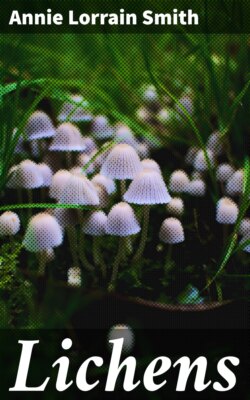Читать книгу Lichens - Annie Lorrain Smith - Страница 61
На сайте Литреса книга снята с продажи.
C. Gonidial Tissues
ОглавлениеWith the exception of some species of Collema and Leptogium lichens included under the term foliose, are heteromerous in structure, and the algae that form the gonidial zone are situated below the upper cortex and, therefore, in the most favourable position for photosynthesis. Whether belonging to the Myxophyceae or the Chlorophyceae, they form a green band, straight and continuous in some forms, in others somewhat broken up into groups. In certain species they push up at intervals among the cortical cells, as in Gyrophora and in Parmelia tristis. In Solorina crocea a regular series of gonidial pyramids rises towards the upper surface. The green cells are frequently more dense at some points than at others, and they may penetrate in groups well into the medulla.
The fungal tissue of the gonidial zone is composed of hyphae which have thinner walls, and are generally somewhat loosely interlacing. In Peltigera[356] the gonidial hyphae are so connected by frequent branching and by anastomosis that a net-like structure is formed, in the meshes of which the algae—a species of Nostoc—are massed more or less in groups. In lichens with a plectenchymatous cortex, the cellular tissue may extend downwards into the gonidial zone and the gonidia thus become enmeshed among the cells, a type of formation well seen in the squamulose species, Dermatocarpon lachneum and Heppia Guepini, where the massive plectenchyma of both the upper and lower cortices encroaches on the pith. In Endocarpon and in Psoroma the gonidia are also surrounded by short cells.
A similar type of structure occurs in Cora Pavonia, one of the Hymenolichenes: the gonidial hyphae in that species form a cellular tissue in which are embedded the blue-green Chroococcus cells[357].
